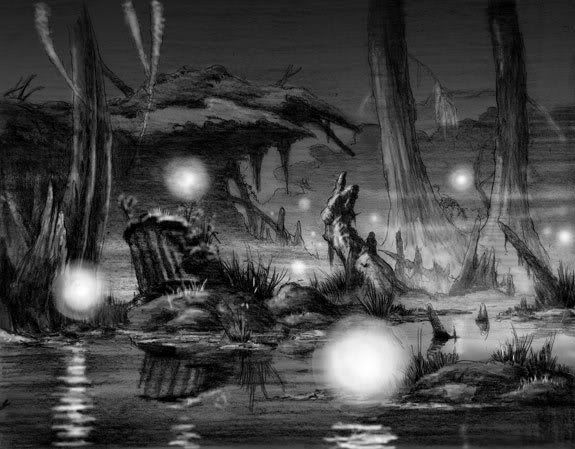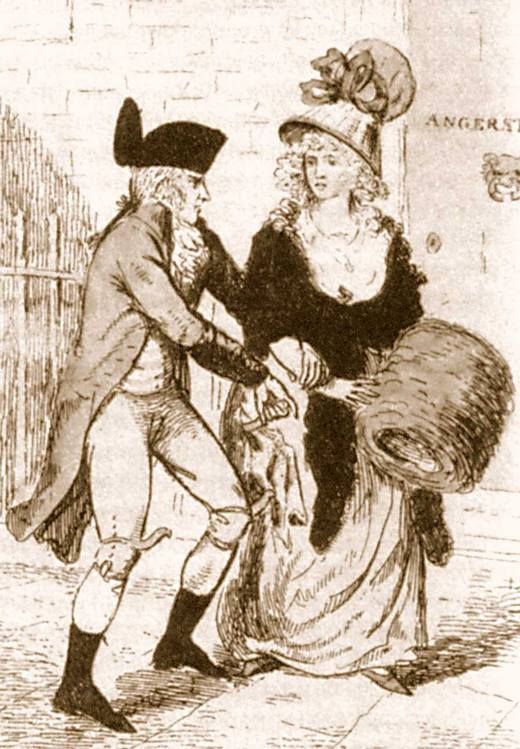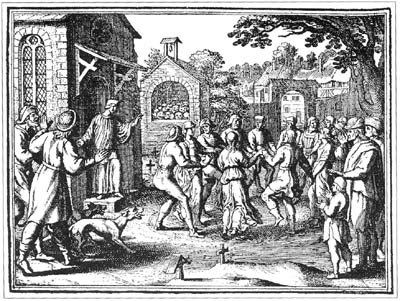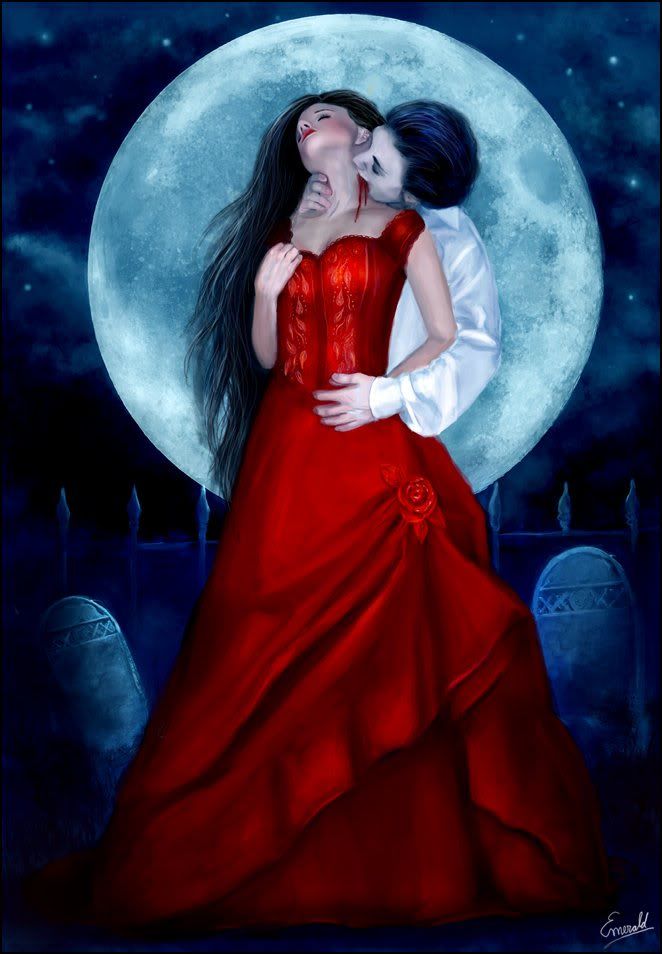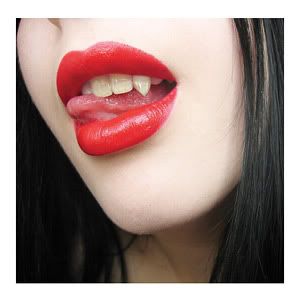
Despite that Egypt and India has been considered the birthplace of the vampire. However , the home of the vampire is actually from Tibet. The Greece's Santorini island is traditionally the most vampire-infested place in the world
Contradict speaking, European Sources claimed that the world's first vampire was from China ! In the past, based on many ancient European sources, it has been firmly believed by many that Vampires originated from China and it was through the silk road it next spread over into India followed by the middle east , then the Mediterranean eventually into the whole of Europe.

Chinese vampires is being known as the Jiang Shi. The types of Vampires in China can varies from the different region , provinces & even Ethnic groups. Chinese Vampires has many variations. The below 2 would some examples.
The Beheaded Vampire
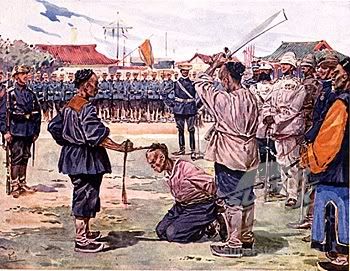
This a vampire whose head has been chop off ! The head flies around during the night constantly seeking for it's own body with the objective of uniting with it's own original body.
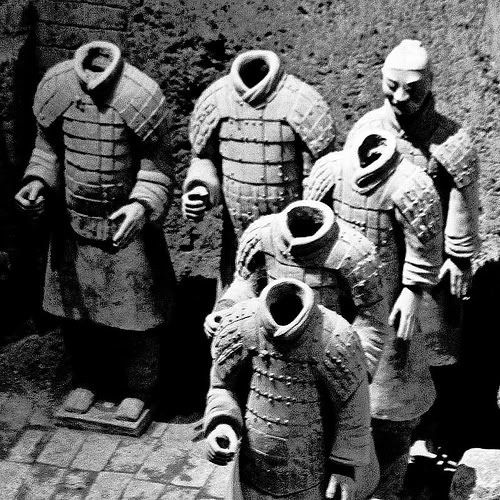
By itself, this flying head is a vampire and is very powerful. Do bare in mind that this beheaded vampire must never reunite with a body. This is because once it does, it will become even far much more powerful and unstoppable than before. You will have to once again separate it from the body and separately destroy the body and head in order to fully destroy it.
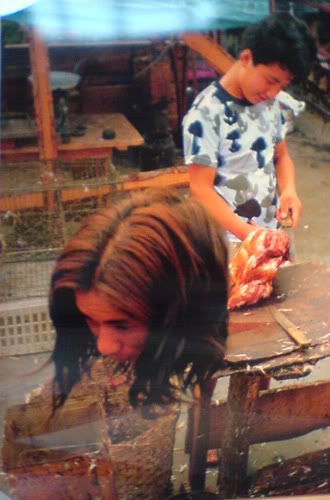
Sometimes it can operate separately ! The head is looking for the body and the body is looking for it's own head. However this is not in every case.
There are also cases where which this head will seek for substitute body. In such cases, this substitute will be from a living human.
Blood Demon (血魔)

Very little is known about this demon. What is known is that this demon is far much more superior than the vampire. Vampires in comparison with this Blood Demon (血魔) is considered to be very inferior. Even a gang of vampires cannot defeat one single Blood Demon (血魔) at all !
The Blood Demon (血魔) comprises from the element of blood. It has been said that it was a ill fated human who led a life of misery, Hate, anger, and vengeance whom under some form of encounters that had him transformed into a demon of blood element which is known to be as the Blood Demon (血魔).
When a blood curse from this Blood Demon (血魔) is being casted on it's victim, The victim will become extremely insanely murderous, merciless , brutal, cruel & violent. This victim will have inhumanly behavior like some unleashed beast or monster that cannot be contained. He or She will have a Strong passion for killing and loves the sight of blood.
There are only 56 Ethnic groups which are being classified and categorized as the official and recognized ethnic groups of mainland China. Any other Ethnic groups who do not belong to this 56 are considered to be as unofficial and unrecognized in China.
Let's have a look a few of these various vampires of the different ethnic Chinese groups or different Chinese regions.
Ethnic Manchurian Chinese Vampire

The Most common Vampires known to most of us from the media is the Ethnic Manchurian Chinese Vampires which is very zombie like and it jumps and hops around. They rise from their graves or coffins to find victims. They don't speak human languages as they communicate with one another in their own vampire language. Their body is very stiff and hard. They also do not feel any pain.
Ethnic Mongolian Chinese Vampire
In the province of Inner Mongolia which is part of China as well as it's neighbor, Mongolia, The Mongol Ethnic groups also have their own versions of Vampires as well.
The Mongol's Version of Vampire would be :
Aniukha
Mongolian God of Time
Mongolian Death Worm ( Sometimes considered to be as a Vampire)
Aniukha
This Ethnic Mongolian Chinese vampire, Aniukha is the spirit of a shaman who has used his power to return from the dead. All shamans have returned from the dead once: a ritual death and rebirth is part of their initiation into becoming a shaman.
However, even though the shaman exists on the threshold between life and death, he is expected to use the powers this grants him only for the good of his community. When he uses these powers for his own ends, he can become a fearsome being indeed. Once a shaman has become an Aniukha, the best way to dispose of him is to drive an aspen stake through his corpse and then cremate him
Ethnic Tibetan Chinese Vampires
The below would be a list of some of Vampire types from the Tibet province of China.
1) Bhagavan Vajra Heruka
2) Vajra Krotishaurima
3) Ratna-Herucka
4) Padma-Heruka
5) Dark-Green Ghasmari
6) Kerimas
7) The Lotus Order
8) Dakini
9) Khadro
10) Tibetan Lord of Death
11) Yama the Tibetan Devil
China's province of Tibet and many of the other regions of China is just like India as in that they possesses rich pantheon of supernatural entities and that many of them had some form of vampiric qualities. Much of it was also shared with neighboring nations such as Nepal, Sikkim, Mongolia and many more.
As for the Tibetans, the most visible of the vampiric entities were the so-called Wrathful Deities who appeared in The Tibetan Book of the Dead. This volume described what Tibetan Buddhists believed would be experienced by individuals in the days immediately following their death.
During these days, the deceased generally wandered into an area dominated by karma (the law of consequences) where the higher impulses of the heart gave way to the reasonings of the brain centers. The heart impulses were personified by the Peaceful Deities.
The brain reasonings were personified by the Wrathful Deities. Contemporary writers on Tibetan Buddhism have generally emphasized that the deities were not objectively real, but were the products of the person picturing aspects of the self. However, in traditional Buddhist lore, they were pictured as part of a true supernatural realm.
The Wrathful Deities are also known as the 58 blood-drinking deities, these vampires were figures representing the brain's reason and the deceased's vampire activities, which appeared to the spirit of the recently dead from the eight day onwards whilst they wandered the karma-dominated zones of the afterlife in Buddhist teachings. These include:
Bhagavan Vajra- Heruka, Vajra-Krotishaurima, Ratna-Herucka, Padma-Heruka, Dark-Green Ghasmari, plus Eight Kerimas and The Lotus Order.
For example, the blood-drinking deities of the Vajra order appeared on the ninth day. Here the intellect was represented by Bhagavan Vajra-Heruka. In one hand he held a human scalp. He was embraced by his mother, Vajra-Krotishaurima, whose right hand held a red shell filled with blood that she placed at her son's mouth.
On the next day, one encountered Ratna-Heruka, who appeared like Vajra-Heruka, but was yellow rather than blue. The red Padma-Heruka appeared on the eleventh day. On the twelfth day, the blood-drinking deities of the Lotus Order were encountered. On the thirteenth day, the eight Kerimas were encountered. These deities had the heads of various animals and engaged in different vampiric and ghoulish actions.
One, the Dark-Green Ghasmari, for example, held a scalp filled with blood that she stirred with a dorje (a holy object) then drank from it. Other similar deities appeared daily throughout the fourteenth day. The dying person was given instructions on relating to the deities and prayers to acknowledge them. Individuals were also told to call upon the name of their own guru and their personal deity to sustain them in the loneliness of the after-death realms. It should be noted that these deities did not attack the individual who encountered them, rather they were pictured as general representations of vampiric actions previously committed by the deceased.
Dakini
A terrible and beautiful demi-goddess from the Tibetan tradition. The Dakinis appear to a person during the process of dying, and they are part of the long visionary journey that ensues after physical death and before the deceased chooses to reincarnate.
The Dakinis are ambivalent beings for they appear in frightening and terrible forms to the deceased, but only in order to get the dead person to address issues about his past life and resolve his attachments so he can move on to a higher existence. Many of the Dakinis are vampyric in nature, being described as naked women, sometimes with the heads of animals, who drink blood from chalices made of human skulls.
The Dakinis appear with the “peaceful and wrathful deities,” beings who, like the Dakinis, exhibit ghastly vampyric natures in an attempt to convince the deceased of the impermanency of the flesh.
Tibetan Lord of Death
The Tibetan Lord of Death, who, like the Nepalese Lord of Death and the Mongolian God of Time, subsisted by drinking the blood of sleeping people. This Tibetan god had a green face and a blue-green body. In his clawed hand he held the Wheel of Life.
The Nepalese god had three blood-shot eyes with flames issuing from his eyebrows and thunder and lightning from his nostrils. In his hands, he carried a sword and a cup of blood. He was decorated with human skulls. The Mongolian god, with his prominent canine teeth, was seen amidst a storm over a bloody sea.
There was also a belief in the pursuit of the living by the dead. The dead were cremated, in part, to prevent the soul from attempting to re-enter it. The soul after death, like person before death, became the object of ritual, in this case to keep it from interacting improperly with the realm of the living.
Sikkim Vampire
Sikkim is a neighbor to Tibet and during early eighteenth century, Princess Pedi Wangmo, the monarch's half-sister, plotted to kill her half-brother. With the assistance of a Tibetan doctor, she bled Chador Namgyal to death and drank his blood. She escaped the palace but was soon caught. Both she and her accomplice were killed. It was believed, by some, that after death she became a vampire. Her story was recounted in a fresco in a monastery in Sinon near Mt. Kanchenjunga.
Regions, Provinces and Neighbors' Vampires of China

In fact, much of the vampires from
India, Nepal and Bhutan can also be found in Tibet. Some of the Tibetan vampires can be found in her neighboring nations or regions.

As for the province of Yunan, much of the Thai (Siamese) and Myanmar ( Burma) vampires can also be found there and likewise some of the Chinese vampires from Yunan province can also be found in Indo-China ,
Myanmar (Burma) and
Thailand ( Siam).
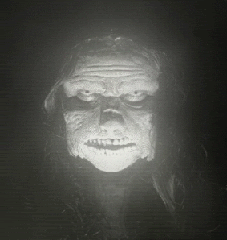
For the province of Xinjiang where the Ugyhur ethnic group are one of the main and biggest groups in that region, it is very likely that the vampires there are mainly those Turkish and
Middle eastern Vampires types.

In the province of Heilongjiang which borders Manchuria region, and Mongolia as well as Russia, There, lies many Ethnic Russian Chinese and hence
Russian Vampires can also be found near that region of China.
































